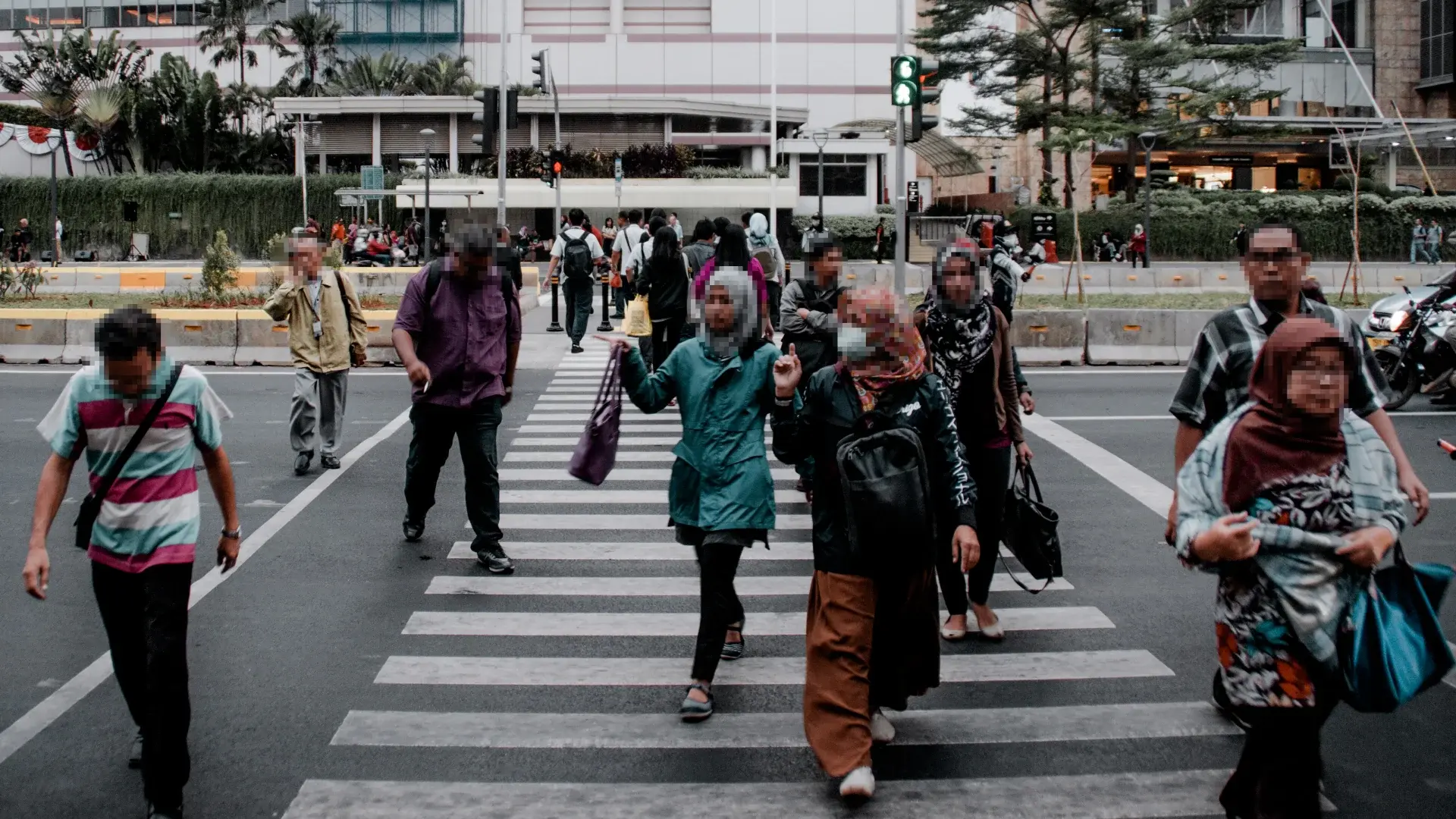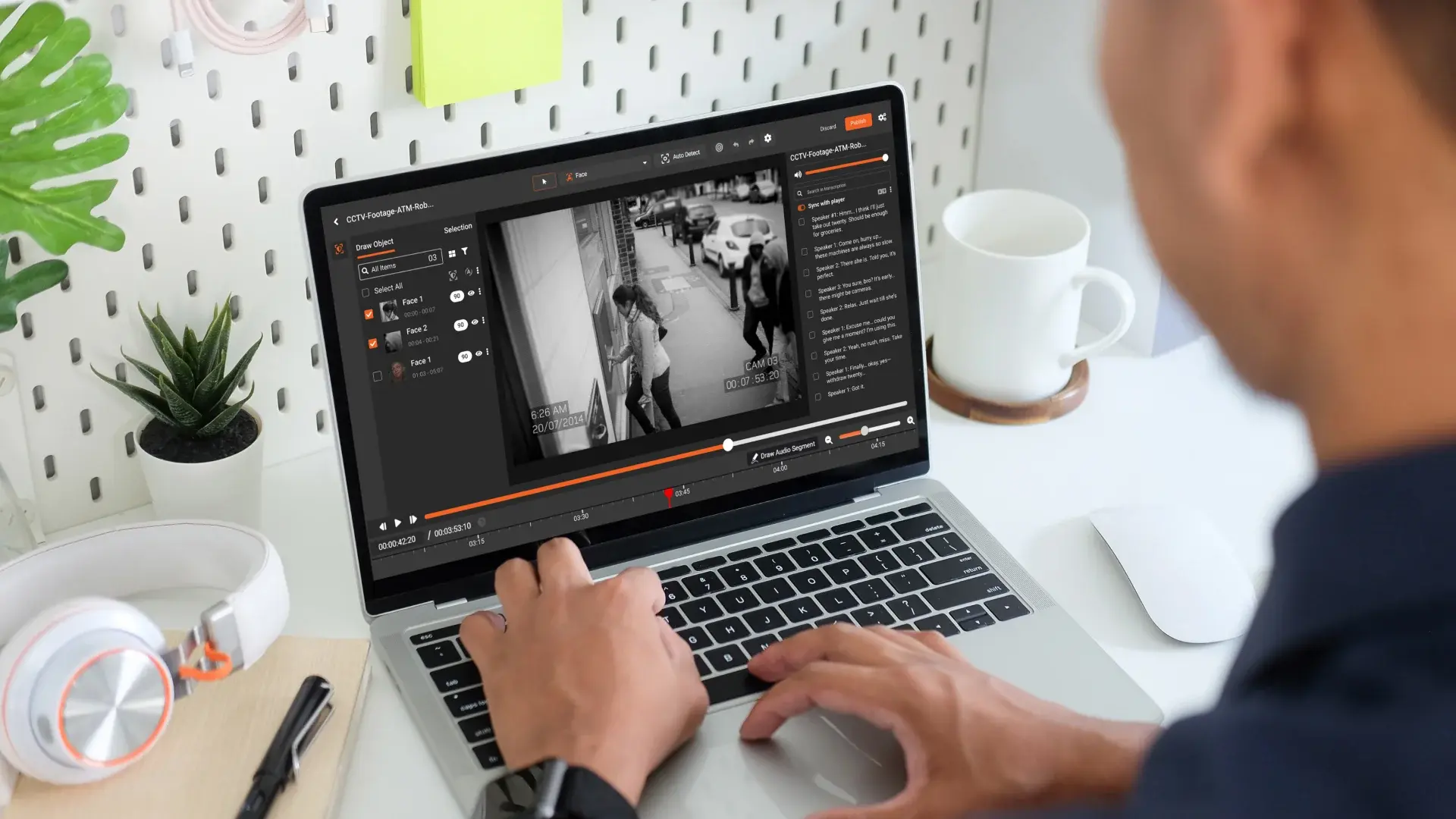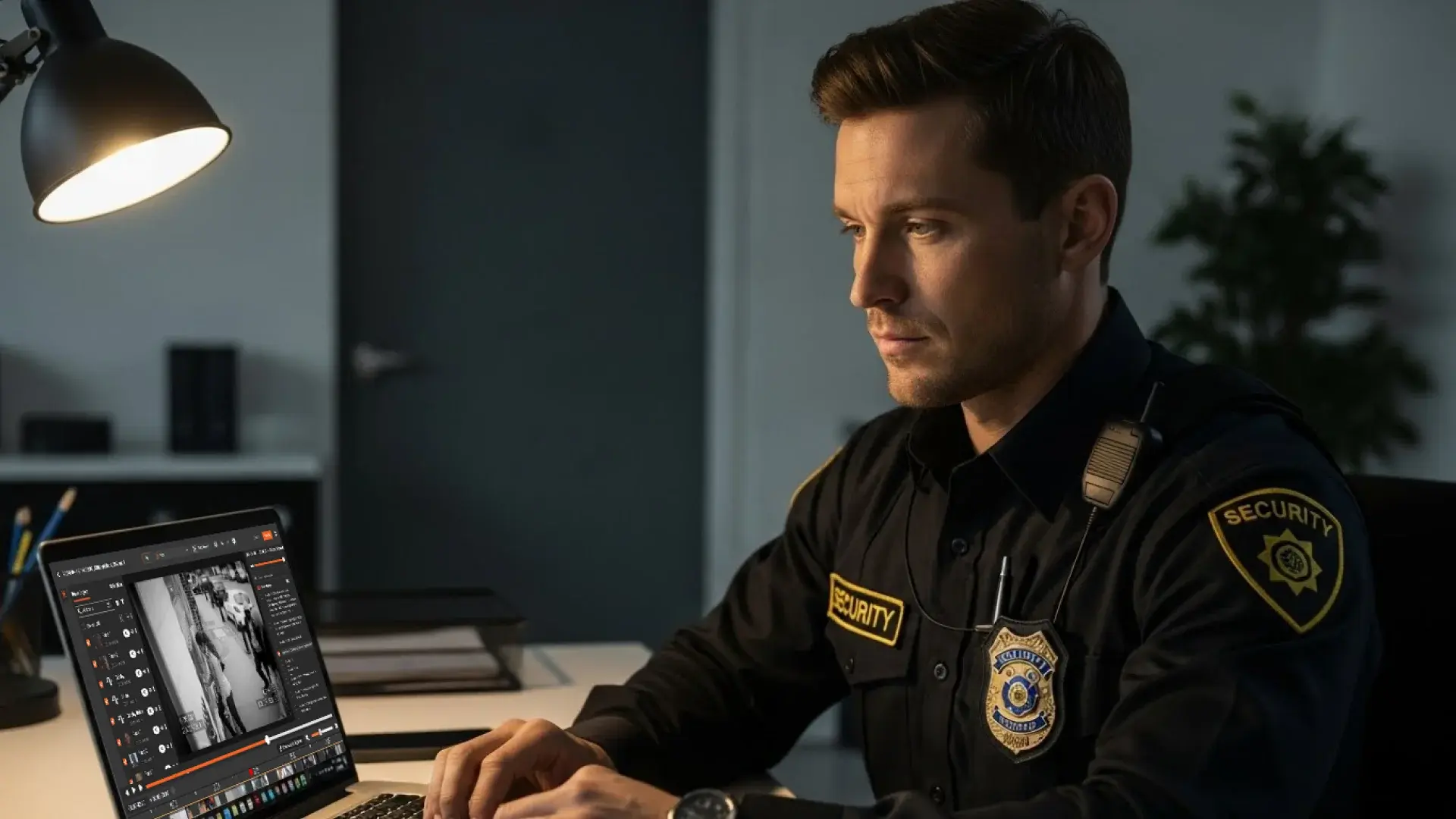How AI Redaction Makes Video Blurring Faster, Safer, and More Accurate
by Zain Noor, Last updated: December 1, 2025

A new study by Sandvine reveals that video now accounts for nearly 65% of all internet traffic, marking a 24% year-over-year increase in data usage from major video platforms. From police body cameras to hospital CCTV footage, video dominates the digital landscape. Yet every frame carries a privacy risk. A single unblurred face, visible license plate, or name tag can expose sensitive data, leading to potential GDPR, HIPAA, or CJIS violations, costly fines, and loss of public trust.
To combat this growing concern, organizations are turning to AI-powered tools that automatically blur video content to protect identities and ensure compliance, saving hours of manual work while maintaining accuracy.
Blurring videos is important for protecting privacy, ensuring compliance, and building trust.
Here’s why it matters:
- Privacy Protection: Prevent exposure of faces, license plates, and personal identifiers.
- Compliance: Meet global privacy regulations like GDPR, HIPAA, FOIA, and CJIS.
- Efficiency: Automate manual redaction processes and save valuable time.
Whether it’s a public surveillance feed or internal corporate footage, automated blurring ensures privacy across every frame.
The Problem with Manual Video Blurring
Traditional methods of blurring videos are slow and prone to human error.
Manual redaction tools might work for short clips, but they fall short for enterprise needs:
- Manual blurring can take hours for long videos.
- Accuracy suffers when people or vehicles move.
- Missing a single frame could lead to regulatory violations.
To achieve scale and precision, automation is key.
How AI Redaction Software Automates Video Blurring
AI-based redaction software leverages computer vision to detect and blur sensitive elements frame by frame.
Here’s how the process works:
- Upload any video body cam, CCTV, dashcam, or conference recording.
- The AI automatically identifies faces, license plates, or custom objects.
- Choose your preferred redaction style: blur, pixelate, or black box.
- The system tracks moving objects across frames, ensuring accurate and consistent results.
- Export securely with metadata and audit trails intact.
This automation reduces human effort while maintaining compliance accuracy.
Industry-Specific Use Cases
Law Enforcement
- Blur faces and license plates in body cam or dashcam videos.
- Protect victim and bystander identities while maintaining evidential integrity.
- Stay compliant with CJIS and FOIA requirements.
Legal
- Redact client or witness identities in video evidence.
- Streamline privacy compliance during discovery and court submissions.
- Maintain confidentiality in legal reviews and hearings.
Healthcare
- Blur patient faces and identification tags in medical or CCTV footage.
- Maintain HIPAA compliance for telehealth or training recordings.
- Safeguard medical staff identities in public case studies or demos.
Government
- Protect citizen privacy in surveillance or public-facing videos.
- Simplify redaction for GDPR and FOIA requests.
- Support data transparency without exposing personal details.
Call Centers
- Blur customer data or screens in recorded video calls.
- Ensure PCI DSS and GDPR compliance during call reviews.
- Protect employee and client privacy during audits.
Retail
- Blur customers and staff in store footage.
- Share secure, privacy-protected videos for training or analytics.
- Comply with workplace surveillance and customer data laws.
Education
- Blur student faces in online classes or security recordings.
- Meet FERPA compliance and institutional privacy standards.
- Protect teacher and student privacy in shared learning content.
Transportation
- Blur passengers or license plates in onboard surveillance.
- Ensure compliance for public transit and logistics operations.
- Support secure sharing of incident or inspection videos.
Best Practices for Choosing an AI-Powered Redaction Solution
When selecting a redaction tool, consider the following:
- Accuracy: Choose software with high detection precision for moving and low-light scenes.
- Automation: Look for solutions that minimize manual intervention.
- Scalability: Ensure it can process large volumes efficiently.
- Compliance: Verify support for global regulations like GDPR and HIPAA.
- Security: Prioritize encrypted storage and secure exports.
VIDIZMO Redactor: A Complete Video Privacy Solution
While several AI tools offer video blurring, VIDIZMO Redactor stands out for organizations needing an end-to-end solution that combines automation, compliance, and flexibility.
Key features include:
- AI-powered detection and redaction within seconds.
- Multiple redaction styles (blur, pixelate, blackout).
- Audio redaction for sensitive speech.
- Bulk video processing.
- Cloud, on-premises, or hybrid deployment.
- Compliance with GDPR, HIPAA, CJIS, and FOIA.
- Built-in audit trails for transparency.
VIDIZMO Redactor empowers enterprises to protect privacy efficiently while maintaining operational continuity.
Blur Video Online vs Enterprise Redaction
Free tools can blur videos online, but they lack enterprise-grade automation, data security, and compliance assurance. Businesses dealing with sensitive information should invest in robust AI solutions that ensure accuracy and privacy at scale, balancing usability with compliance confidence.
Conclusion: Blur Video Securely and Efficiently
As video content grows rapidly, so do privacy concerns. Blurring videos is no longer optional; it’s essential for compliance, data protection, and public trust.
AI-powered Video redaction tools make this process efficient, scalable, and reliable. For organizations that handle sensitive recordings, adopting advanced solutions like VIDIZMO Redactor ensures privacy protection without slowing operations.
Protect privacy. Save time. Stay compliant.
Get Free Trial - No Credit Card Needed
People Also Ask
Can AI tools automatically blur video content?
Yes, AI-powered software detects and blurs faces, license plates, and other sensitive elements in video footage automatically.
Does automated blurring work on moving subjects?
Yes, intelligent tracking ensures consistent blurring even as people or vehicles move across frames
Can I blur license plates in CCTV or dashcam videos?
Absolutely. AI tools can detect and blur license plates from surveillance and vehicular recordings with high accuracy.
What should I look for in a video redaction tool?
Focus on automation, scalability, accuracy, compliance readiness, and deployment flexibility.
How does VIDIZMO Redactor help with compliance?
It’s designed to meet global privacy standards like GDPR, HIPAA, and CJIS while providing secure, efficient automation.
Can I deploy VIDIZMO Redactor on-premises?
Yes, it supports cloud, on-premises, and hybrid deployments based on organizational needs.






No Comments Yet
Let us know what you think